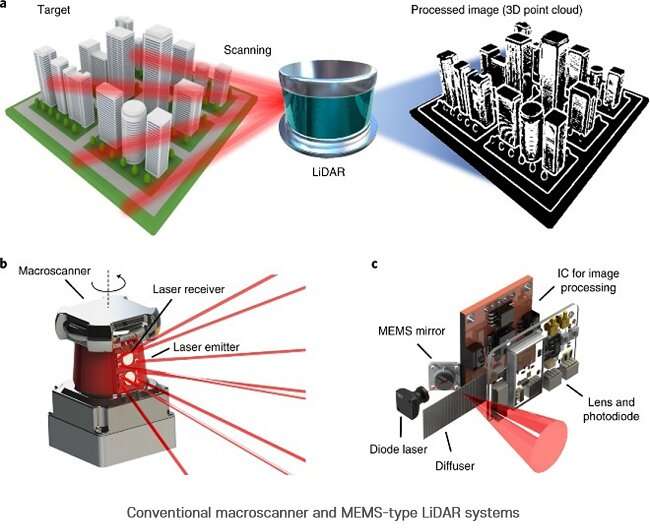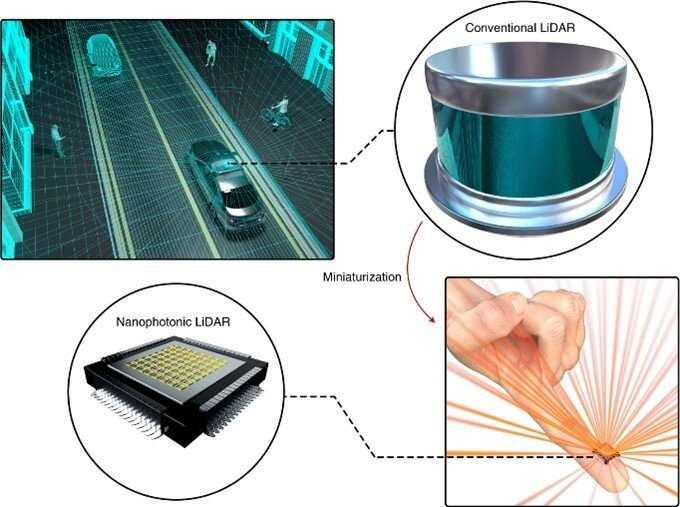A LiDAR device the size of a finger now available

A nanophotonics-based LiDAR technology developed by a POSTECH research team was presented as an invited paper in Nature Nanotechnology, the leading academic journal in the field of nanoscience and nanoengineering.
In this paper, a POSTECH research team (led by Professor Junsuk Rho of the departments of mechanical engineering and chemical engineering, postdoctoral researcher Dr. Inki Kim of the Department of Mechanical Engineering, and Ph.D. candidate Jaehyuck Jang of the Department of Chemical Engineering) in cooperation with the French National Science Institute (CNRS-CRHEA) focused on the LiDAR device developed through studying the metamaterials based ultralight nanophotonics.
In addition, the paper introduces core nanophotonic technologies such as the phase-change material-based beam scanning technique, a flash-type LiDAR that does not require beam scanning by applying point-cloud generation device, and light-source device integration and scalable manufacturing methods.
In particular, the paper explains that the ultra-precise LiDAR device developed by the research team can be applied not only to autonomous vehicles, but also to intelligent robots, drones, 3D panoramic cameras, CCTVs, and augmented reality platforms. LiDAR technology collects the depth information of an object by irradiating a laser beam onto the object and measuring the time of its return. LiDAR sensors are gaining attention in the field of future displays from machineries—such as autonomous vehicles, artificially intelligent robots, and unmanned aerial vehicles—to being mounted on iPhones for 3D face recognition or used in secure payment systems.

Currently, the high-end mechanical LiDAR system on the roof of autonomous vehicles is about the size of two adult fists stacked together, and costs tens of thousands of dollars. In addition, there are still many challenges to be overcome, such as a charging process that consumes a huge amount of power and heat management.
As a solution to this, the research team proposed an ultracompact LiDAR technology based on nanophotonics. The researchers explain how this nanophotonic technology can innovate the LiDAR sensor system in various aspects, from the basic measurement principles of LiDAR to the latest ultrafast and ultra-precise nanophotonic measurement methods, and nanophotonic devices such as metasurfaces, soliton microcomb, and optical waveguides.
"Currently, the research team is conducting several follow-up studies to develop ultralight metasurface-based compound LiDAR systems," remarked Professor Junsuk Rho. "If this research is successful, we can look forward to manufacturing affordable ultrafast and ultra-precise LiDAR systems at an affordable cost."
More information: Inki Kim et al, Nanophotonics for light detection and ranging technology, Nature Nanotechnology (2021). DOI: 10.1038/s41565-021-00895-3
Journal information: Nature Nanotechnology
Provided by Pohang University of Science & Technology (POSTECH)





















